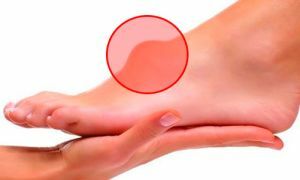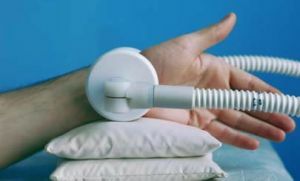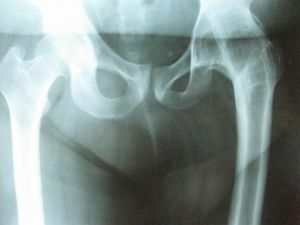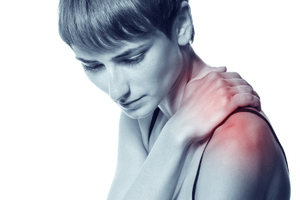 Hygroma is a benign tumor that develops from tendon sheaths or mucous bags as a result of accumulation of fluid in them. Being not painful, but mobile and dense, it can be difficult to move.
Hygroma is a benign tumor that develops from tendon sheaths or mucous bags as a result of accumulation of fluid in them. Being not painful, but mobile and dense, it can be difficult to move.
Depending on the location, it can be soft, elastic, hard, resembling cartilage or bone density.
Contents of the article
- The causes of the disease
- The causes of the disease
- Symptomatic symptomatology
- Diagnostic techniques
- Classification of the disease at the site of localization
- Treatment that is prescribed for
- disease Conservative treatment
- Surgical method
- Traditional medicine methods
- Causes of complications
- Preventive measures
- Video: Recurrent hygroma inareas of the clavicle
Causes of the disease
Factors affecting the development of the tumor, remaincamping on the level of assumptions. Until today, the causes that affect the appearance of this disease have not been fully understood. Doctors-traumatologists point out, for the following reasons, contributing, in their opinion, to the development of pathology:
- metaplasia( changing the properties of tissue with its transformation into a different type of tissue);
- injuries or bruises( primary or repeated);
- complicated tenosynovitis or bursitis( inflammatory lesions of synovial bags surrounding the joint or attached to it tendons);
- is a genetic predisposition for blood relatives;
- heavy loads when playing sports.
Hygromes are localized in areas of the body exposed to permanent injuries, as well as prolonged pressure - this occurs mainly in people of certain professions.
Symptomatic symptomatology
Characteristic for pathology. At the initial appearance, the hygroma proceeds without causing any inconvenience, increasing gradually its dimensions. The main signs of the emergence of education are:
- formation of a rounded shape from 3 to 5 cm;
- smooth surface;
- elastic and soft consistency;
- thickening over the formation of the skin;
- squeezing, causing discomfort;
- violation of full joint motion;
- when reaching a large size, a sense of pain.
Diseases occur in chronic form for a long time. At the same time, the symptoms of pathology do not immediately manifest. Education is fixed to its base and it is difficult to move it from its place. Depending on the size and location of the localization, it may have some peculiarities.
 More details on how to treat the hygroma brush you can learn from our article. Why do some methods give a result, and others - ineffective?
More details on how to treat the hygroma brush you can learn from our article. Why do some methods give a result, and others - ineffective?
Before proceeding to surgical removal of the hygroma of the wrist joint, find out about the complications after surgery here.
Diagnostic procedures
If the tumor appears in typical places, the diagnosis is made on the basis of examination, palpation - palpation of the component swelled and complaints from the patient. In case of doubt and complicated localizations,
- X-rays are performed( to eliminate pathologies of the joints of the bone);
- MRI - this study allows you to accurately determine the contents of the tumor and the structure of its wall;
- ultrasound( in cases of doubt) - this method allows you to see the cyst and evaluate its structure - filled with fluid or homogeneous, as well as the presence of blood vessels in the wall of the tumor;
- puncture( collection of material for histological examination).
Classification of the disease at the site of localization
Tumors can occur anywhere, regardless of the age of the person, more often they appear in men whose activity is in heavy physical labor.
The following pathologies are identified by localization:
- Wrist hygroma - causes unbearable pain and prevents normal joint function, requires immediate removal.
- Hygroma wrist joint - occurs on the back of the anterior or lateral surface in the area of ligaments. It is clearly visible from under the skin. Sometimes it can be located under the bunches, in this case it can be seen with the increased bending of the brush. In most cases, the hygroma in this department is asymptomatic, and only a few patients complain of minor pain or discomfort in their movements.
- Hygroma joint is a painless formation that disrupts the extensor and flexion functions, which prevents a normal life.
- Hygroma brush is a species that develops similarly to a multitude of cystic formations. The cause is damage or thinning of the joints due to natural causes. To the touch, the formation is elastic and dense, when it is detected it is necessary to provide a rest to the hand, otherwise it will grow and develop further. It manifests itself in the form of a cone mainly on the right hand, since it is this side that puts the whole load on, but if a person more often uses his left hand, then the appearance of a hygroma is possible from this side.
- Hygroma of the finger - gives a lot of inconvenience( in the cosmetic plan), causes a person severe pain, especially when pressed. It can remain unchanged or grow over time. The cone takes the form of an egg and contains inside the liquid - mucin.
- Hygroma of foot - is formed in the ankle or outside the phalanal bones.
 It, is the reason of inconveniences, at wearing of footwear and movement. Education can be traumatized by shoes, resulting in an increase in size. As a result, the nerve endings and nearby vessels will be squeezed, acute pains will appear, and a pathological exacerbation will begin. To avoid this, the hygromic foot must be removed without delay;
It, is the reason of inconveniences, at wearing of footwear and movement. Education can be traumatized by shoes, resulting in an increase in size. As a result, the nerve endings and nearby vessels will be squeezed, acute pains will appear, and a pathological exacerbation will begin. To avoid this, the hygromic foot must be removed without delay; - Hygroma of the knee joint - this tumor is caused by excess fluid accumulating in the cavity of the synovial bag, the reasons for this are injuries or overstrain of the knee joint. The risk group includes people who spend a long time on their feet( couriers, sellers, athletes, etc.);
- Education under the knee - appears as a result of stagnation or overvoltage. With its occurrence, discomfort occurs when the leg joint is bent or unbent. Develops in the popliteal fossa, while not giving the opportunity to move normally. Subject to mandatory removal;
- Pathology of the tendon - the name was received because of the location of the site. Its development occurs against bursitis or tendovaginitis. If the formation appears as a result of tendovaginitis, it is said about the sinus tendon;
- Brain hygroma - there are two types: intradural - characterized by the accumulation of fluid between the sheets of the medullary membrane and subdural - the accumulation of fluid in the brain;
- Education on the neck - appears mainly in newborns on the side of the neck. It consists of several cysts. It spreads into the axillary region or the direction of the mediastinum. The operation, if necessary, is carried out without delay, if there is no threat to health, then it is transferred to a later date.
Hygromes differ in their kind, they are single-chambered - young formations and multi-chambered ones - arise from permanent injuries and inflammations, in which fibrin falls out or blood accumulates, which leads to the appearance of bridges.
Treatment that is prescribed for

illness. The photo shows how physiotherapy works when removing the hygroma
. The treatment of the pathology is established by the doctor after the diagnosis.
Previously, there was a method of crushing, as a result of which, under the influence of strength, the contents of the tumor were punctured or burst, which caused pain, led to an inflammatory process, and eventually the cyst appeared again.
It is not used today, as there are many other safer methods.
Conservative treatment of
This therapy is used only at the initial stage of education development and includes a number of the following activities:
- X-ray therapy - it is used mainly for the destruction of malignant tumors. Therapy of this kind can be dangerous, therefore it is shown to be carried out in sufficiently accessible places, the hygroma is included in the list of these places;
- Physiotherapy - electrophoresis with iodine, ultraviolet irradiation;
- Punctures - suctioning the contents of the hygroma with a syringe, followed by the administration of drugs that promote healing. This method is used for large sizes by gigrom;
- Blockade of glucocorticoids - this method of treatment is performed under local anesthesia. The formation is pierced with a syringe, the contents are aspirated in the same way as in puncture, but in this case glucocorticoid preparations are administered;
- Paraffin and mud applications;
- Immobilization with gypsum retainer or orthopedic dressing - to reduce the production of liquid. It is applied for 7 days, but not more.
Conservative treatment can be effective in case of resting the patient's joint. If treatment of a hygroma without surgery did not help it is necessary to resort to a surgical intervention.
Surgical method
Today, this method is considered the most effective.
Indications for the operation are:
- is not aesthetics;
- rapid growth;
- discomfort;
- pain when driving.

The photo shows how the hygroma is removed with the operation
There are several ways of removing the formation:
- Bursectomy - removal of the synovial bag.
- Laser therapy - removal of the hygroma by the laser consists in heating the hygroma, which results in its complete destruction.
- Surgical excision - removal of the hygroma and all tissues affected by it.
Operations are performed under general or local anesthesia. The main advantage of surgical treatment is to minimize the occurrence of hygroma again.
Traditional medicine methods
Treatment of hygroma with folk remedies is quite common and in many cases shows effective results. It is worth highlighting the proven and most effective recipes:
- Steam the hygromous in hot water( 30 min.), Apply a liquid unsweetened honey onto the lump, apply parchment paper over it and wrap it with a warm cloth. After 3 procedures, it is possible to completely get rid of the tumor;
- Dampen a piece of cloth in alcohol 70% and attach to the education, wrap it with a cellophane bag, and put a warm sock on top. The procedure is carried out until the hygroma disappears. But you must be careful to avoid burns, with severe burning, you must shorten the time of the procedure;
- In 500 ml of boiling water dissolve 2 items / liter.sea salt and wait until the solution cools down, dipped in it a woolen cloth of a small size and put it on top of it, covered with a cloth from wool and covered with compress paper, and finally with a bandage. Carry out the procedure for 10 days, preferably before going to bed, leaving a compress for the whole night;
- Thinning in stupa 0,5 st.ground wormwood. The resulting mass is spread on a cloth napkin, attach to a tumor, cover with a plastic bag, and on top with a scarf, hold for 2 hours. Carry out the procedure 4 r./day for 14 days.
Compresses are also good to make from celandine juice, red clay and lilac flowers.
Causes of complications
Disease in rare cases leads to complications, but, everything, the probability exists under the following conditions:
- purulent tendovaginitis - develops in advanced cases, more often in patients with additional health problems;
- infection in the process of operating - the use of non-sterile surgical instruments, but this risk is too small, since operations are performed under sterile conditions;
- re-formation of tumor after surgery.
Complications can also occur as a result of using general anesthesia for the operation, therefore, before the operation the patients are carefully examined.
Preventative measures
Prevention measures are aimed at the implementation of measures to prevent the regular traumatization of joints in the course of work, as well as timely treatment of diseases that lead to the development of gigrom( chronic bursitis and tendovaginitis).



